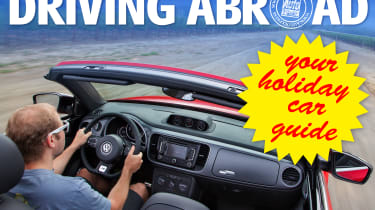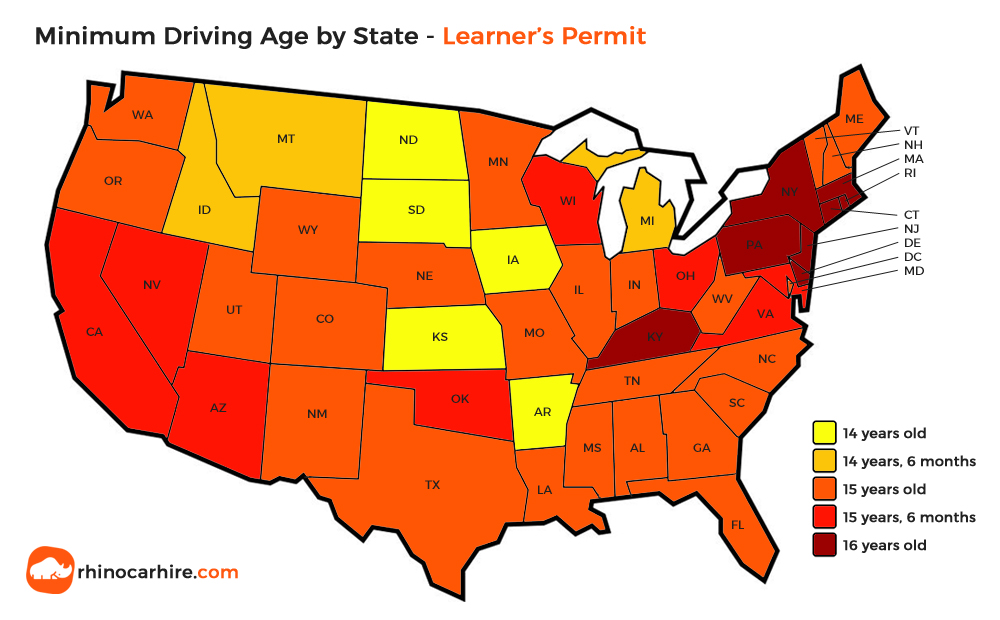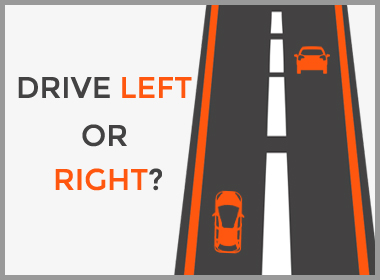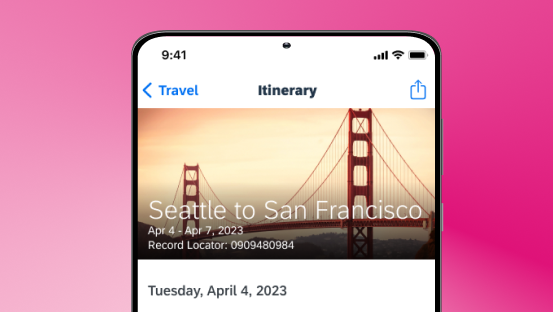Ran When Parked - Car, Vehicle & Truck Guides and Repair Journals.

Can a Tourist Drive in the USA? Understanding Rental and Licensing Requirements
Touring the United States offers a wealth of sights and experiences, and many travelers find that driving is an exhilarating way to see the country. As tourists, we’re often keen to hit the open road, but it’s crucial to know the rules and regulations that govern driving in the U.S. An International Driving Permit (IDP), coupled with your valid driver’s license from your home country, allows us to drive legally on U.S. roads and is a key part of your travel documentation.

Securing an IDP before we embark on an American road trip translates our existing licenses into several languages and ensures that they are recognized across the United States. This permit is typically valid for one year and facilitates ease of driving across state lines, provided we adhere to state-specific traffic laws and U.S. road rules. It’s also essential to be aware that renting a car often involves additional requirements, such as obtaining the necessary insurance and liability coverage.
JUMP TO TOPIC
- 1.1 Eligibility and Application Process
- 1.2 Documents Required For IDP
- 2.1 Rules of the Road and Road Safety
- 2.2 Consequences of Traffic Violations
- 3.1 Understanding American Driving Culture
- 3.2 Car Rental and Insurance for Visitors
- 4.1 Extending Your Permit’s Validity
- 4.2 Official Forms and Translation Services
Acquiring an International Driving Permit
When planning to drive in the United States as a tourist, securing an International Driving Permit (IDP) is an essential step if you come from a non-treaty country to ensure you comply with driving regulations.
Eligibility and Application Process
Documents required for idp.
Securing an IDP requires a couple of key documents on our end. We will need a signed copy of our valid driver’s license to attest to our driving ability, and several passport-sized photos for identification on the IDP. Depending on the issuing body, a current passport may also be requested to prove our identity and country of citizenship. Along with these, we must fill out the relevant application form and potentially provide proof of residency. After gathering these documents, we send them alongside the necessary fees to the authorized issuing organization.
Can a Tourist Drive in the USA?
Navigating traffic laws and regulations is crucial for a tourist driving in the United States. Knowledge of the rules of the road and understanding the potential consequences for violating them ensures road safety and compliance with legal standards.
Rules of the Road and Road Safety
When we drive in the US, we obey the same set of traffic laws to uphold road safety.
Traffic School and Driving Tests
To familiarize ourselves with these, we can opt for traffic school, especially if we’re from a country with different driving practices. A driving test, though typically not required for short stays, can be beneficial if we plan on staying longer and need to obtain a state driver’s license.
We understand the importance of adhering to posted signs and signals as well as maintaining our vehicles in safe working order. It’s our responsibility to ensure fuel levels ⛽, tire pressure 🌡️, and vehicle maintenance 🔧 are regularly checked for our safety and the safety of others on the road.
Consequences of Traffic Violations
Understanding the consequences of not following the rules is as important as knowing the rules themselves.
We acknowledge the role police and the Department of Transportation play in enforcing these laws. They ensure our adherence to traffic regulations and road safety measures.
Traffic infractions can lead to fines, driving restrictions, or in severe cases like drunk driving, imprisonment. Always respect the local traffic laws to avoid these penalties.
We must be aware that consequences can escalate with the severity of the violation. Traffic violations such as speeding or running a red light typically result in fines and possible driving points against a license. More severe offenses, particularly those that endanger lives like drunk driving, can lead to more serious repercussions, including jail time. Each state has specific laws and penalties, making it imperative for us to stay informed about the local rules of the road wherever we travel.
Driving in the United States as a Foreigner
Driving in the U.S. requires understanding local laws and securing the appropriate documentation to ensure compliance and safety. Whether renting a car or using a foreign license, it is crucial to navigate these requirements skillfully.
Understanding American Driving Culture
On American Roads:
- We drive on the right-hand side of the road.
- Seat belt usage is mandatory in all states.
- Driving under the influence of alcohol or drugs is strictly prohibited.
As foreign drivers, we must adapt to American driving norms which often emphasize speed and efficiency. Understanding traffic signals, road signage, and local driving etiquette is essential to prevent violations and accidents.
Car Rental and Insurance for Visitors
Securing a Rental:
- Most car rental agencies will accept a valid national license.
- Foreign visitors typically need to be at least 21 years old to rent a car.
- An International Driving Permit (IDP) may be required, so check with the rental agency.
When renting a vehicle, insurance is a necessity; however, if our own policy doesn’t cover overseas rentals, we’ll need to obtain coverage from the rental company. Also, if we’re planning to visit multiple U.S. states, we should check each state’s requirements, as driving laws vary.
For short-term visitors, some states even allow the use of a foreign license, but we must verify this individually, as it’s not universal. Moreover, taking the time to familiarize ourselves with American road rules and signage greatly enhances the experience of driving in the United States.
Renewal and Translation of Driving Permits
When planning to drive in the US, keeping your driving permits up to date and properly translated is essential. We cover the process of extending your permit’s validity and utilizing official forms and translation services here.
Extending Your Permit’s Validity
To continue driving in the US, it’s crucial to ensure your international driving permit (IDP) or foreign driver’s license is valid.
- An IDP can be used in the US alongside your national driving license, typically for up to one year.
- If you plan to stay longer, you should visit the local Motor Vehicle Department (MVD) regarding permit extension.
Eligibility for extension varies, and some may need to obtain a U.S. driver’s license eventually. Renewal procedures differ by state, so check with local authorities for specific requirements.
Official Forms and Translation Services
For a seamless driving experience in the US, ensure your driving documentation is correctly translated and recognized by US officials.
Translation of your foreign driver’s license or International Driving Permit should be accurate and done through approved services. These documents translate your credentials into English and compare your home country’s driving permit standards against U.S. road rules.
It is crucial to utilize only officially sanctioned translation services to avoid legal complications or misunderstandings with authorities.
Always carry your original driving permit, IDP, and the official form of translation when driving. Proper documentation helps in case you’re stopped by law enforcement or need to clarify your driving status.
- Recent Posts
- What Fuse to Pull to Disable a Car: Essential Knowledge for Vehicle Security - June 1, 2024
- When Do Transmissions Go Out: Recognizing the Signs of Failure - June 1, 2024
- Do You Have to Disconnect Battery to Change Relay: Essential Steps for Safe Replacement - June 1, 2024
Related posts:
- Can You Drive Without a Sway Bar: Is It Safe for You?
- How Long Do Audi’s Last: Unveiling the Lifespan of Audi Vehicles
- Import Japanese Cars to USA: A Comprehensive Guide to Regulations and Processes
- Kick Down in Automatic Transmission: Understanding Downshift for Acceleration
- Best Extended Car Warranty Companies: Your Guide to Reliable Vehicle Protection Plans
- Importing a Car from Germany to USA: A Step-by-Step Guide
- How to Test Drive a Car Without Buying: Navigating Dealer Expectations
- How Long Does It Take to Learn Stick Shift: Mastering Manual Transmission
Shop for Car Insurance
Other Insurance Products
Types of mortgages
Calculators
Find & Compare Credit Cards
Cards with Rewards
Cards for a Purpose
Cards for Building Credit
Credit Card Reviews
Understanding Credit & Score
Student Loans
Paying for College
Personal Finance for College Students
Life Events
Navigating U.S. Roads as an International Driver
Updated: May 20, 2024
Advertising & Editorial Disclosure
- Staying Compliant in the US
- Driving With a Foreign License
- Common Questions From Visitors
The Importance of Car Insurance
Tips for driving in the u.s. safely.
- Expert Advice
If you’re a tourist, visitor, immigrant or international student wanting to drive in the U.S, there are a few rules and regulations you’ll need to know before getting behind the wheel. Depending on the amount of time you’re planning on being in the U.S., you’ll also either need a special permit or a U.S. license.
Learn the steps you need to take to make sure you safely and legally comply with the requirements.
How to Stay Compliant as a Short-Term International Driver in the U.S.
If you’re a tourist in the U.S and you plan on driving, you’ll be required to have an International Driver’s Permit (IDP), as well as a valid license from your own country. You may need to contact the Department of Motor Vehicles (DMV) of the state you’ll be driving in to find out if there are any additional requirements. You’ll also want to make sure you’re covered with car insurance as an international driver in case anything goes wrong while you’re on the road.
What is an International Driver’s Permit?
An IDP translates the government-issued driver’s license you have from your home country into ten languages.
It features your photo, name and relevant driver information. But it’s not a substitute for an actual driver’s license. It also can’t be used in place of a suspended or revoked license, so you’ll want to make sure your driver’s license is valid and up-to-date when applying for an IDP.
Steps to Obtain an IDP
An IDP must be obtained from the same country that issued your driver’s license. The U.S doesn’t issue IDPs to short-term visitors — you’ll need to get this done before your visit. The IDP is valid for up to one year, provided your driver’s license is also valid for that time.
The process to get an IDP is relatively easy if you follow these steps:
Contact your country’s motor vehicle department
Call the department in your home country. Find out if there are any particular requirements needed to begin the application process.
Fill out an application
Applications are usually found online, at a local government office or at your country's version of the American Automobile Association (AAA) .
Take passport pictures
You will need to provide two original passport photos. Make sure your photos are the correct size and quality.
Check your driver’s license
Your current driver’s license needs to be valid before you can obtain an IDP.
Pay a permit fee
Permit fees are usually around the equivalent of $20.
Get your IDP
An IDP can often be obtained through the mail or in person, depending on where you are.
Staying in the U.S.
The requirements for driving in the U.S. vary depending on whether you are a short-term visitor or resident.
Foreigners are allowed to drive from 3 to 6 months with a foreign driving license beginning on the date they entered the U.S. After this, a foreign license won’t work. To continue driving, you must obtain an IDP. But the U.S. doesn’t issue IDPs to short-term visitors — you can only get this from your home country.
Plan ahead. Or if you’re in the U.S for longer than six months, try to get a U.S driver’s license.
Steps on How to Get a Driver’s License
Most foreigners who relocate to the U.S. will need to go through the full application process to get a U.S. driver’s license, just like any first-time driver. The details required for the process will differ from state to state, but you’ll most likely have to follow these steps:
Gather the necessary documents
Make sure you have all the right documents you’ll need. These will likely include:
- A form of ID that has your name, picture and date of birth on it (like your passport)
- Your Social Security Number or proof that you cannot obtain one
- Proof of lawful presence in the U.S. (such as a visa, permanent resident card or citizenship certification)
- Proof of state residence (through a different state ID, utility bill or bank statement)
- Your international driver’s license
- A passport photo
Fill out an application form
The legal age for driving varies throughout the country, so you will need to make sure that you are eligible to apply for a license. Consult the application requirements of your local DMV before you arrive.
Pay the fee
Your fee will depend on the state where you reside. Some states will charge you for the application. Others will charge you for receiving the license itself.
Take a driving test
You’ll need to pass both a written and a practical test to be able to drive. Written tests include questions about the traffic rules and regulations of your state. A practice exam will also test your knowledge of a vehicle and its controls, which you can prepare for this exam with a driver's education course .
Examine your vision
While you don’t have to pass a medical exam to get a driver’s license, you do need to get your vision tested before you are certified to drive. You can usually take a vision test at your local DMV office or ask a medical professional to examine you.
When you have completed the above-mentioned steps, you will be issued a temporary license that will be valid for 30 to 90 days, depending on your state. Your permanent license will be sent to your mailing address. In most states, driver’s licenses are valid for eight years, but that can vary.
Driving With a Foreign License: Reciprocity Agreement
Some states have reciprocity agreements with certain countries that allow visitors to simply exchange their original foreign license for a U.S. license without the need to take a driving test. These countries include Canada, France, Germany, South Korea, Taiwan and Japan.
But reciprocity agreements are state-specific, so bear in mind that eligibility for the exchange may depend on the state you are in. You may still need to pay the appropriate fees and get your vision checked to get your U.S. license equivalent.
If you don’t see your country on the list, it’s worth finding out whether there have been any new agreements that might be relevant to you.
Understanding State Driving Laws and Regulations
Each state has its own set of driving laws and regulations , as well as license requirements. Each state also has its own car insurance premiums, so you’ll want to familiarize yourself with them as soon as you can. There are often differences related to speed limits and traffic punishments, depending on where you are in the country. But there are several key regulations that apply across the U.S., including being medically fit to drive and being of legal age.
Use the interactive map below to help you understand the duration you can drive with an international driver's license in each state and which states have a foreign reciprocity agreement.
Hover with your mouse on desktop or hold your finger over your state on mobile to learn more.
Click or tap to visit your state's motor vehicle department.
Common Questions Asked by Foreign Visitors
There are many questions foreign drivers have when it comes to being behind the wheel on U.S. roads. While many answers may be state-specific, there are a few general rules to follow.
Car insurance is an important aspect to consider for Americans and visitors alike. Whether you’re living in the U.S. as a citizen, permanent resident or temporary visa holder, you need to have car insurance to drive on U.S. roads. It's best to check with your state's department of motor vehicles for detailed requirements before you begin to shop around for the best car insurance prices .
There are some major differences between driving in the U.S. and driving in other countries. For starters, knowing what to do if you are involved in a crash or collision can make the experience less frightening and decrease the chance of unnecessary complications, says Ryan Pietzsch, from the National Safety Council. His other suggestions are:
Know the traffic laws
Prior to arriving, be sure to visit the motor vehicle department website for the state(s) you plan to drive in. All states have an electronic version of their Driver’s Manual online.
Unlike drivers in many other countries, Americans drive on the right side of the road. Stay cognizant of where you are.
Be aware of age requirements
The minimum age to independently drive a car is 16. The minimum age to rent a car is 21. Regardless of your age, never drink and drive.
Use seat belts
Seat belts must be worn by the driver and all passengers. Additionally, children under 13 must sit in the back seat and use an appropriate child safety seat or booster seat.
Avoid distractions
Driving while using handheld devices such as cell phones is illegal in most states and takes thousands of lives each year. Put phones away and #JustDrive.
Follow speed limits
Speeding is a factor in more than a quarter of all traffic fatalities in the U.S. Don’t exceed the speed limit — which is in miles per hour (mph)— and be sure to pay attention to those walking and biking.
What to Do if You Get a Ticket or Are Involved in an Accident?
If you get pulled over, the most important thing to do is comply with the officer’s requests, says Pietzsch. “If you are stopped by law enforcement, acknowledge the officer’s presence by turning on your right turn signal. Activating your signal lets the officer know that you recognize their presence. Then, proceed to moving your vehicle to the right side or shoulder of the road. If there is no shoulder or it is too narrow to pull over, you should find the next safest location and pull over,” he says.
Then, follow these additional steps:
Place your hands in clear view
Do not reach for anything in the vehicle unless instructed by the officer.
Keep important documents handy
Drivers are required to have a valid driver’s license, registration and insurance to operate a vehicle. Keep these documents in an easily accessible place, such as the glove box.
Follow the officer’s instructions
Police officers are trained to follow protocol. Avoid escalating a situation by listening to an officer’s directions.
Call 911 if you’re involved in an accident
The driver of a motor vehicle involved in a crash or collision must “stop immediately, or as close as possible, to the scene of the incident without obstructing traffic more than necessary. However, the driver should not move the motor vehicle if the incident involves the transportation of hazardous materials or results in injury, death or entrapment,” says Pietzsch.
If you are involved in an accident, remain at the scene, and give your name, address, driver’s license and registration number to law enforcement.
Resources for International Drivers in the U.S.
Driving in a new country can be a daunting experience. A number of resources can help drivers familiarize themselves with the best practices for driving in the U.S.
- USA.gov : This government website has resources for foreign drivers in the U.S., as well as additional information you may need about other aspects of moving to the country.
- The National Safety Council : The National Safety Council is a non-profit which teaches about road safety. It focuses on eliminating the leading causes of preventable injuries and deaths.
- The American Automobile Association: AAA or Triple-A, as it’s commonly known, offers tips and advice for those driving in the U.S. Members of the association can also receive roadside assistance.
About Nadia Neophytou

Nadia Neophytou is a journalist based in New York City who writes for various leading American and South African publications, such as The Hollywood Reporter, Billboard, Deadline, Quartz, Glamour, the Mail & Guardian, the Sunday Times, Forbes Africa and more. Nadia also worked as an arts and entertainment journalist for Eyewitness News, and as the news network's US correspondent for South Africa. She has covered topics ranging from Occupy Wall Street, numerous mass shootings, the re-election of Barack Obama, Donald Trump's election and the #MeToo movement.
- American Automobile Touring Alliance . " International Driving Permit ." Accessed May 28, 2021 .
- Driving-Tests . " U.S. Rules of the Road ." Accessed May 28, 2021 .
- Federal Highway Administration . " U.S. Driving Last Year Was Lowest in Two Decades, New Data Show ." Accessed June 4, 2021 .
- Federal Trade Commission . " International Driver's License Scams ." Accessed May 28, 2021 .
- Injury Facts from National Safety Council . " Motor Vehicle Safety Issues ." Accessed June 4, 2021 .
- ProCon . " States (and DC) That Allow Driver’s Licenses for People in the Country Illegally ." Accessed May 28, 2021 .
- Shorelight . " How International Students Can Apply for a US Driving License ." Accessed May 28, 2021 .
An official website of the United States government
Here’s how you know
Official websites use .gov A .gov website belongs to an official government organization in the United States.
Secure .gov websites use HTTPS A lock ( Lock Locked padlock icon ) or https:// means you’ve safely connected to the .gov website. Share sensitive information only on official, secure websites.

International driver’s license for U.S. citizens
If you are a U.S. citizen planning to drive while traveling abroad, find out if you need an International Driving Permit (IDP) for the country you are visiting.
Know what an International Driving Permit (IDP) is and if you need one
An International Driving Permit (IDP), sometimes known as an international driver’s license, allows you to drive legally in countries that require one. It is a document that translates your identifying information into different languages. If the country you are visiting requires an IDP, you will carry it along with your U.S. driver’s license.
When visiting another country as a U.S. citizen:
- Your state driver's license is valid while driving in Canada and Mexico.
- In other countries, you may need to get an IDP for foreign drivers.
Use the Department of State's website to search for the country you will be visiting . On that country’s page, see the "travel and transportation" section. It will explain your destination’s driver’s license rules for visitors.
How to get an International Driving Permit
The American Automobile Association (AAA) is the official organization authorized by the U.S. Department of State to issue IDPs. Be aware of other websites that claim to issue international driver’s licenses or IDPs. Many are fraudulent and may try to scam you out of money or personal information.
If you have a U.S. driver's license, learn how you can apply for an IDP in person or by mail from AAA .
LAST UPDATED: May 21, 2024
Have a question?
Ask a real person any government-related question for free. They will get you the answer or let you know where to find it.
- Skip to Content
- Skip to Main Navigation
- Skip to Search

Indiana University Indiana University IU

- Career Preparation
- Student Experience
- Freshman Students
- Transfer Students
- Graduate Students
- Financial Documentation
- Undergraduate
- Graduate & Professional
- Scholarships
- External Funding
- Sponsored Funding
- Applying for a Visa
- SEVIS Transfer to IU
- Change to F-1 Status
- Change to J-1 Status
- English Proficiency Test
- Vaccinations and TB Test
- Travel Arrangements
- Academic Advising & Support
- Global Citizen Scholarship
- Rising Star Scholarship
- BP Peduli Scholarship
- Bunchana Atthakor Scholarship
- Eoyang-Lee Scholarship
- Irving and Lena Lo (ILLO) Scholarship Fund
- Maintaining Status
- Military Service
- Leave of Absence
- Complete Withdrawal
- Local Address
- SEVIS Violations
- Travel Outside the U.S.
- SEVIS Transfer from IU
- Graduation Preparation
- DACA & Undocumented Status
- Insurance for Dependents
- IU International Plan
- Glossary of Terms
- Medical Care
- Equity & Inclusion
- Civil Discourse & Free Speech
International Driver's Permit
- Indiana Driver's License
- Leasing, Renting, or Sharing a Car
- Buying a Car
- Alternative Transportation
- Travel Outside of Bloomington
- Airport Shuttle
- Cell Phones
- Finding a Job
- On-Campus Employment
- Curricular Practical Training
- STEM OPT Extension
- Academic Training
- J-2 Work Authorization
- Severe Economic Hardship
- Apply for a Social Security Number
- Department Hiring & Hosting
- New or Repeat Program Restrictions (Bars)
- Two-Year Home Residency Requirement (212(e))
- Obtaining a Visa
- J-2 Dependents
- J-1 Funding Documentation
- University Enrollment
- English Language Proficiency Requirement
- J-1 Visa Categories
- Changing Employers
- Planning a Visit
- Visa Waiver Program
- J-1 Student Intern Visas
- Application Based on IU Employment
- Travel During the Application Process
- Assignments Abroad
- Absence from the U.S.
- Common Questions
- How to apply
- Short-Term Student Programs
- Student Organizations
- IU World’s Fare
- Photo Contest
- Conversation Partners
- Practical English Tutorials (PET)
- Grad-Scholar Connect
- Exploring Nature
- Things to Do in Bloomington
- Student Ambassadors
- Social Media
- International Statistics
- International Student Fee
- Using ATLAS
- About Indiana University
- Life at Indiana University
- After Admission
- Services for Students
- Health & Safety
- इंडियाना विश्वविद्यालय के बारे में
- इंडियाना विश्वविद्यालय में जीवन
- प्रवेश के बाद
- छात्रों के लिए सेवाएं
- स्वास्थ्य और सुरक्षा
- 인디애나대학교에서의 생활
- نبذة عن جامعة إنديانا
- الحياة في جامعة إنديانا
- الخدمات الطلابية
- الصحة والسلامة
- Sobre la Universidad de Indiana
- La vida en la Universidad de Indiana
- Financiamiento
- Después de la admisión
- Servicios para estudiantes
- Salud y seguridad
- Sobre a Indiana University
- Vida na Indiana University
- Após a admissão
- Serviços para estudantes
- Saúde e segurança
- À propos de l’Université de l’Indiana
- La vie à l’Université de l’Indiana
- Financement
- Après l’admission
- Services proposés aux étudiants
- Santé et sécurité
Office of International Services
- Living in the U.S.
- Transportation
Obtaining an International Driver’s Permit
You may drive a car in the United States for one year using an International Driver’s Permit (IDP) and a driver’s license from your home country.
Getting an IDP is the simplest way to be licensed to drive in the United States.
You must get your IDP in your home country before arriving in the United States. The U.S. does not issue IDPs to nonresidents.
What is an International Driver’s Permit?
An IDP is proof that you hold a valid driver’s license in your own country. It also provides a translation into almost a dozen languages so that police and other authorities in other countries can read your license in their own language.
The IDP is a special license authorized by United Nations conventions on road safety. Nearly 180 countries are signatories.
The process for obtaining an IDP varies by the issuing country. Contact the agency that granted your driver’s license, such as the department of transportation or department of state, to ask about the process. Do your research to make sure that the entity you are working with to obtain an IDP is reputable. Verify the source with a government agency, if possible.
The issuing authority will require you to submit two passport-style photos and fill out an official form. To be eligible, you must be at least 18 years old and have a valid driver’s license in your home country. You will not be required to take a driving test, but there is a small fee for the license.
An IDP cannot be postdated, extended, or renewed, and is valid for only one year from the date of issue. Additionally, be sure that your driver’s license will not expire during that time. You must have both an unexpired IDP and an unexpired driver’s license to drive legally .
Do not buy your IDP online
Online services are not valid and will not be accepted in the U.S. Check with your local license provider for instructions.
What do I do when my International Driver’s Permit expires?
You may only drive with your IDP for one year. After that, you will need an Indiana driver’s license. The process to get one takes a long time, so it’s important to start planning now.
Learn how to get an Indiana driver’s license
Office of International Services resources and social media channels
- Annual Security Reports
- Driving abroad
Driving in the USA: top tips
Before planning that american road trip or fly-drive holiday, check out our guide to driving in the us.

Driving stateside is hugely different to driving in the UK, or anywhere in Europe for that matter, which is why we have gathered all the tips and advice you need to successfully navigate the States highways. Rest assured, those who think that the only compulsory requirement for driving in America is V8 motor are very wide of the mark.
Aside from anything else, driving in the US can be a necessity rather than a luxury thanks to a lack of public trains and buses, but that isn’t a bad thing. Gems such as the Pacific Coastal Highway and Route 66 make driving a hire car quite the adventure. Add to that the allure of American car culture (as seen on TV no less) and it's no wonder tourists from all over the world leap at the chance to try US roads.
• International driving permit: do i need one?
One area the States really excels is the choice of hire cars. You can get behind the wheel of family-friendly minivans, muscle cars , picks-ups and full-fat RVs – there really is something for everyone. With it’s wide-open highways and urban ‘blocks’, it shouldn’t matter how big a car you hire, making progress is pretty straightforward – especially compared to some European road networks.
There are some elements of US driving that take some getting used to though, including driving on the right. You’ll also need to get used to undertaking on the freeways, and going wheel-to-wheel with the massive pick-up trucks so loved by the locals, as well as knowing and understanding rules of the road that – for example – allow you to ‘turn on red’ at traffic lights.
So whether you’re planning a route across the US, or just want to say you’ve spent a day in a convertible muscle car on your US holiday, before you start hunting down those US rental car companies, scroll down to read our tips and advice on all the paperwork, rules of the road and knowledge you need to have fun and stay safe – and legal – on your US road trip.
Read on for our detailed guide to the documents, equipment and road etiquette you need to drive legally and confidently in the USA.
Which documents do I need to drive in the US?
You’ll be glad to hear that you can rent a car in the US with your UK licence. The US has an agreement with the UK whereby a full and valid UK driver’s licence permits vehicle rental in the States, you will have to have held your licence for over a year.
In most cases you have to be above 21 but some companies will insist that you’re 25 before handing you the keys to a rental car. A passport and visa are obvious requirements to enter the country, and will be needed to rent a car as well.
Tips for renting a car in the US
Wherever you will be driving, you’re most likely to spend at least some of the time on the motorway. Motorways, or interstates, extend for miles without a kink in the wide open spaces of America, which is why we recommend getting a car with enough oomph to make the journey smooth and comfortable. Anything with a 2.0 litre diesel or petrol will do just fine but smaller cars that work so well on European roads might not cut the mustard.

What do I need to carry in my car when driving in the USA?
US laws do not necessitate reflective jackets, but your car must come with warning triangles that can be placed by the roadside.
Most US states have banned using a phone while driving, but even if there are no specific laws prohibiting it, we recommend you using a hands free system at all timers when driving.
Radar detectors are also allowed in most states, though areas near military bases will have specific laws banning their use. Washington D.C. is one of the states prohibiting the use of radar detectors, but the fixed location speed camera alerts on your sat-nav are unlikely set the highway patrol after you.
You must carry a proof of insurance and ownership of the vehicle at all times. If the vehicle is a rental, you will be provided with all the necessary documents to carry.
Checklist for driving in the USA
- Full and valid driver’s licence
- Proof of Insurance
- Passport/national ID
- Warning triangles
What is the alcohol limit for driving in the US?
There is no US law that requires you to carry a breathalyser, but the country is cracking down on drink driving. Each state has its own blood alcohol limit, and the most common level we found was 0.08 per cent, the same as in England and Wales.
US highway toll fees and petrol prices
The US has road tolls that you should be aware of. Tolls are often placed before entering cities and usually charge a standard fee. For example, entering New York will cost $14.00, or $9.75 during off peak hours.
If UK fuel prices give you nightmares you will be sleeping soundly while visiting the US. Petrol and diesel priced at around 40p per litre means you can afford to rent that big V8 muscle car for the week and not worry about turning off the air-con.
Driving in the USA: insurance and breakdown cover
Since you’re likely to be renting a car in the US, we suggest you spend a little extra on insurance and breakdown cover. You’ll be driving on unfamiliar roads and the premiums the hire companies ask are usually quite reasonable.
Watch out for undertaking
Undertaking is perhaps the biggest culture shock for UK motorists on US roads. Undertaking is not illegal, and is exercised on most motorways. US drivers aren’t particularly fond of indicating for direction change, either, which will make you watch your mirrors even more closely.
Right turns at red lights
You’re also allowed to turn right when a traffic light is red, provided that there is no oncoming traffic.
Take your turn at the crossroads
If you come to a four-way intersection without lights, the car that arrived first has priority and then the next. This will take some getting used to, so when approaching intersections slow down and keep an eye out on who’s arrived to the stop mark when.
What are your top tips for driving in the US? let us know in the comments section below...
Driving abroad: everything you need to know

- • Holiday car hire: scams, tips and how to get a great deal
- • Driving on the right: we take out left-hand drive test
- • European breakdown cover: top tips
- • International driving permit: do i need one?
- • Driving in France
- • Driving in Spain
- • Driving in Italy
- • Driving in the USA
Recommended

Green card insurance for driving abroad

Take your dog to France: pet passports and tips when travelling to Europe by car

The Channel Tunnel at 30: LeShuttle and what it means for UK motorists

Driving abroad: your holiday car guide
Most popular.

Kia comes out with the Shadows: new Kia Sportage, Picanto and Stonic special editions on sale

New Ford Kuga facelift 2024 review: sensible SUV gets a bold new face

BYD Dolphin vs Fiat 600e: which brand makes the best budget EV?

Dave C. ★★★★★ Dave loved the fast delivery My relocation to Chicago was fast, smooth and without any delay thanks to A1 Auto.
Courtney J. ★★★★★ Courtney enjoyed the honest guidance Just what you need when trusting someone with your wheels! Kudos to this company!
Jeff D. ★★★★★ Jeff enjoyed the fair price Moved my ride hassle-free with these folks.Fair pricing, no surprises. Definitely recommend them!
Maria L. ★★★★★ Maria enjoyed the special care and safety Huge thanks to the movers – they were meticulous with my car. Love these guys.

“A1 Auto Transport became synonymous with top-notch service delivery, unfailing punctuality and constantly preoccupied with customer satisfaction. ” See Article — USA Today
Can I Drive a Car in the US as a Tourist?
Published by Joe Webster .
Driving with an International Licence Drive in the US
Driving with an international license in the us, your license should be issued in english, no medical conditions affect driving abilities, visitor status and driving permits, requirements for eligibility of driving in the us, how can i acquire a united states driving license, bottom line.

You're traveling to the US as a tourist and want to drive legally. No problem. All you need is to meet several requirements and follow US driving laws.
Do you need an International Driving Permit? Do you have to go through a test to understand traffic laws? And do you need insurance to drive legally?
We'll answer them here. This article offers everything you need to know about safely operating a car in this country as a visitor.
Driving is an integral component of American life; many rely on cars as primary forms of transport. Like every country worldwide, any driver must hold an official license before legally driving on US roadways and highways.
However, foreign drivers wanting to drive in the US face unique obstacles due to having to abide by specific rules regarding foreign licenses and registration processes.
Foreigners with valid driving licenses from their home countries can drive in the US. They are permitted to do so for up to three months without needing an American driver's license.
So this means those coming from India on long holidays or business trips can transfer a foreign driver's license and use it, provided all relevant conditions have been fulfilled.
Before traveling, visitors are strongly urged to research any policies concerning foreign drivers to properly operate a vehicle within US law.
Visitors must familiarize themselves with relevant paperwork requirements to operate vehicles while on American territory legally.
Yes, driving in the US with a valid foreign license is possible. Under US driving law, drivers operating vehicles on public roads require a valid driver's license. They can obtain it locally as long as it meets US law standards.
Foreign licenses issued by authorized government agencies outside of the US typically remain valid for an indeterminate amount of time after you arrive in America.
However, you should be mindful of any restrictions associated with driving with a foreign license before setting out on the roads.
For instance, if your stay exceeds six months, obtaining an official driver's license issued from one of 50 United States or Washington DC could become necessary.
Terms and conditions vary from place to place. So contact a DMV office to get more information.

English-only licenses provide essential safety standards. Examiners, as well as police officers on the road, can easily interpret what's written on it, helping ensure they effectively analyze your driving license and interpret any potential violations that might come their way.
At the same time, this reduces potential conflicts with traffic police who may only speak English and, therefore, could present potential obstacles when trying to communicate in other languages.
A valid driver's license must include your name, digits, and symbols written out accurately in English for accuracy purposes.
If you plan to drive abroad for longer than three months, getting an International Driver's Permit (IDP) is ideal.
Foreign officials should also easily understand it when conducting checks on the authenticity or validity of your driving permit. Please be aware that IDPs issued in English provide more clarity for checking authenticity or validity when driving overseas.
What happens if you don't have an International Driver's Permit and cannot issue one in English? Some travel agents and government officials may advise using translation services to allow you to drive abroad legally.
As per law, anyone looking to drive professionally or as a hobby must meet specific conditions which allow them to do so safely. This particular condition includes not having any medical problems that hinder operation and control.
What conditions may hinder your control of a vehicle? Look at the following list.
- Visual disabilities
- Heart issues
- Neurologic conditions (seizures or epilepsy, sleep disorders, mental fitness problems, and sensory losses)
- Physical limitations inhibiting response time or coordination
As part of their US driving license application, applicants must go through a thorough medical exam, including vision testing and seizure disorder evaluation, to qualify.
Medical professionals will assess all conditions interfering with safe driving during this period.
All physical dysfunction should be reported to the relevant authorities so they may assess if an applicant meets driving responsibilities.
There may be special arrangements where individuals with certain medical conditions still qualify and receive permission to drive as long as certain criteria or precautions are followed.

Short-term visitors refer to those entering the US on an occasional or temporary basis for six months or less and entering with either a tourist, student or another temporary authorization visa.
Visas may be extended up to two years. However, most visitors only stay up to six months before returning home. Staying longer requires getting an International Driving Permit from one's country of origin in advance before arriving in America.
Residents or permanent residents in the US are individuals who possess green cards and legally admit themselves as permanent citizens of this nation.
Individuals granted residency status also receive an Individual Development Permit that must be renewed every ten years to remain valid within this nation.
Permanent residents enjoy many rights and benefits unavailable to short-term visitors, including access to social services like healthcare, employment opportunities, and education assistance.
Thus, applying for residency requires a far more stringent process than getting a tourist visa or temporary authorization for tourism travel.
Driving is an honor that carries certain duties to ensure everyone's road safety. For anyone wishing to operate legally in the US, meeting certain qualifications—like being at least 18 years old when driving—is necessary.
You will need accurate identification to qualify for a license, whether state driving licenses issued from within your home country or international ones issued abroad, as well as an International Driving Permit (IDP).
Keep in mind that expired licenses are prohibited. If your ID has expired, obtain a new ID before driving. Furthermore, you must be free from health problems that make you unfit to drive.
Safety should always come first when driving anywhere within the US. Thus, you must abide by all requirements for safe driving practices before beginning your trip.
Once you have all the required papers and can show that you meet all the requirements for driving a car, you can legally drive wherever you want to go.
But of course, compliance with all traffic laws is highly crucial. Violating them could result in stiff fines or, worse yet, jail time.
Acquisition of a United States driving license is significant if you plan on staying for any length of time in this country. Foreigners enjoy equal access to driving licenses as American citizens, though various forms of ID and proof of residence will likely be needed when applying.
At your application appointment, bring two proofs of ID showing full name, DOB, and photographs, as well as proof of residency such as bills or residential agreements for license requirements.
Due to state driving tests being non-negotiable and payment of relevant fees being necessary before taking these exams.
Once you pass, if successful, you will receive a temporary license valid between 30 to 90 days before receiving your permanent one in the mail.

Driving as a tourist in the US is entirely possible. Simply ensure all necessary documents are in order and familiarize yourself with road rules. Soon enough, you'll be driving on highways and byways across this great nation.
However, if you're shipping a car, leave it to A1 Auto Transport. Many US citizens still rely on our knowledge as one of the premier auto transporters because we can protect precious cargo, such as a luxury car or an electric vehicle .
Browse our services, identify your needs, and get an instant shipping cost estimate instantly.

Joe Webster always knew the auto transport industry would be a great career option. And with decades of experience, Joe is now an established consultant for A1 Auto Transport.
Joe was born in Santa Cruz, California. During high school, Joe worked as a mechanic; a job continued to work part-time during his bachelor's degree.

...my choice in terms of auto transport has to be A1 Auto Transport. It’s in the name, but also in the quality with which they do their jobs. I’ve never had a problem with this company.

A1 Auto Transport... From the get go, they were very different from my past options. Their website was very professional and up to date, full of useful information. I requested a quote using their online form, and I got an email response within an hour. Surprisingly fast!

There are a lot of options for auto transport these days, which surprisingly makes it harder to find a good company. I received more than 10 offers to ship my car, but I couldn’t decide on any of them... Fortunately, I made the right choice with A1 Auto Transport.

We give A1 Auto Transport a big 10 out of 10! We chose them to move our car from California to Vermont, since we needed professionals.
Visit our social, and see what our clients are saying about us:

Our Partners:
A-1 Auto Transport is a disclosed agent for the following shipping companies:
No commitment

Before you go...


An official website of the United States government
Here’s how you know
Official websites use .gov A .gov website belongs to an official government organization in the United States.
Secure .gov websites use HTTPS A lock ( Lock A locked padlock ) or https:// means you’ve safely connected to the .gov website. Share sensitive information only on official, secure websites.
- Fact Sheets
Frequently Asked Questions: Guidance for Travelers to Enter the U.S.
Updated Date: April 21, 2022
Since January 22, 2022, DHS has required non-U.S. individuals seeking to enter the United States via land ports of entry and ferry terminals at the U.S.-Mexico and U.S.-Canada borders to be fully vaccinated for COVID-19 and provide proof of vaccination upon request. On April 21, 2022, DHS announced that it would extend these requirements. In determining whether and when to rescind this order, DHS anticipates that it will take account of whether the vaccination requirement for non-U.S. air travelers remains in place.
These requirements apply to non-U.S. individuals who are traveling for essential or non-essential reasons. They do not apply to U.S. citizens, Lawful Permanent Residents, or U.S. nationals.
Effective November 8, 2021, new air travel requirements applied to many noncitizens who are visiting the United States temporarily. These travelers are also required to show proof of COVID-19 vaccination. All air travelers, including U.S. persons, must test negative for COVID-19 prior to departure. Limited exceptions apply. See CDC guidance for more details regarding air travel requirements.
Below is more information about what to know before you go, and answers to Frequently Asked Questions about cross-border travel.
Entering the U.S. Through a Land Port of Entry or Ferry Terminal
Q. what are the requirements for travelers entering the united states through land poes.
A: Before embarking on a trip to the United States, non-U.S. travelers should be prepared for the following:
- Possess proof of an approved COVID-19 vaccination as outlined on the CDC website.
- During border inspection, verbally attest to their COVID-19 vaccination status.
- Bring a Western Hemisphere Travel Initiative compliant border crossing document, such as a valid passport (and visa if required), Trusted Traveler Program card, a Department of State-issued Border Crossing Card, Enhanced Driver’s License or Enhanced Tribal Card when entering the country. Travelers (including U.S. citizens) should be prepared to present the WHTI-compliant document and any other documents requested by the CBP officer.
Q. What are the requirements to enter the United States for children under the age of 18 who can't be vaccinated?
A: Children under 18 years of age are excepted from the vaccination requirement at land and ferry POEs.

Q: Which vaccines/combination of vaccines will be accepted?
A: Per CDC guidelines, all Food and Drug Administration (FDA) approved and authorized vaccines, as well as all vaccines that have an Emergency Use Listing (EUL) from the World Health Organization (WHO), will be accepted.
Accepted Vaccines:
- More details are available in CDC guidance here .
- 2 weeks (14 days) after your dose of an accepted single-dose COVID-19 vaccine;
- 2 weeks (14 days) after your second dose of an accepted 2-dose series;
- 2 weeks (14 days) after you received the full series of an accepted COVID-19 vaccine (not placebo) in a clinical trial;
- 2 weeks (14 days) after you received 2 doses of any “mix-and-match” combination of accepted COVID-19 vaccines administered at least 17 days apart.
Q. Is the United States requiring travelers to have a booster dose to be considered fully vaccinated for border entry purposes?
A: No. The CDC guidance for “full vaccination” can be found here.
Q: Do U.S. citizens or lawful permanent residents need proof of vaccination to return to the United States via land POEs and ferry terminals?
A: No. Vaccination requirements do not apply to U.S. citizens, U.S. nationals, or Lawful Permanent Residents (LPRs). Travelers that exhibit signs or symptoms of illness will be referred to CDC for additional medical evaluation.
Q: Is pre- or at-arrival COVID testing required to enter the United States via land POEs or ferry terminals?
A: No, there is no COVID testing requirement to enter the United States via land POE or ferry terminals. In this respect, the requirement for entering by a land POE or ferry terminal differs from arrival via air, where there is a requirement to have a negative test result before departure.
Processing Changes Announced on January 22, 2022
Q: new changes were recently announced. what changed on january 22.
A: Since January 22, 2022, non-citizens who are not U.S. nationals or Lawful Permanent Residents have been required to be vaccinated against COVID-19 to enter the United States at land ports of entry and ferry terminals, whether for essential or nonessential purposes. Previously, DHS required that non-U.S. persons be vaccinated against COVID-19 to enter the United States for nonessential purposes. Effective January 22, all non-U.S. individuals, to include essential travelers, must be prepared to attest to vaccination status and present proof of vaccination to a CBP officer upon request. DHS announced an extension of this policy on April 21, 2022.
Q: Who is affected by the changes announced on January 22?
A: This requirement does not apply to U.S. citizens, U.S. nationals, or U.S. Lawful Permanent Residents. It applies to other noncitizens, such as a citizen of Mexico, Canada, or any other country seeking to enter the United States through a land port of entry or ferry terminal.
Q: Do U.S. citizens need proof of vaccination to return to the United States via land port of entry or ferry terminals?
A: Vaccination requirements do not apply to U.S. Citizens, U.S. nationals or U.S. Lawful Permanent Residents. Travelers that exhibit signs or symptoms of illness will be referred to CDC for additional medical evaluation.
Q: What is essential travel?
A: Under the prior policy, there was an exception from temporary travel restrictions for “essential travel.” Essential travel included travel to attend educational institutions, travel to work in the United States, travel for emergency response and public health purposes, and travel for lawful cross-border trade (e.g., commercial truckers). Under current policy, there is no exception for essential travel.
Q: Will there be any exemptions?
A: While most non-U.S. individuals seeking to enter the United States will need to be vaccinated, there is a narrow list of exemptions consistent with the Centers for Disease Control and Prevention (CDC) Order in the air travel context.
- Certain categories of individuals on diplomatic or official foreign government travel as specified in the CDC Order
- Children under 18 years of age;
- Certain participants in certain COVID-19 vaccine trials as specified in the CDC Order;
- Individuals with medical contraindications to receiving a COVID-19 vaccine as specified in the CDC Order;
- Individuals issued a humanitarian or emergency exception by the Secretary of Homeland Security;
- Individuals with valid nonimmigrant visas (excluding B-1 [business] or B-2 [tourism] visas) who are citizens of a country with limited COVID-19 vaccine availability, as specified in the CDC Order
- Members of the U.S. Armed Forces or their spouses or children (under 18 years of age) as specified in the CDC Order; and
- Individuals whose entry would be in the U.S. national interest, as determined by the Secretary of Homeland Security.
Q: What documentation will be required to show vaccination status?
A: Non-U.S. individuals are required to be prepared to attest to vaccination status and present proof of vaccination to a CBP officer upon request regardless of the purpose of travel.
The current documentation requirement remains the same and is available on the CDC website . Documentation requirements for entry at land ports of entry and ferry terminals mirror those for entry by air.
Q: What happens if someone doesn’t have proof of vaccine status?
A: If non-U.S. individuals cannot present proof of vaccination upon request, they will not be admitted into the United States and will either be subject to removal or be allowed to withdraw their application for entry.
Q: Will incoming travelers be required to present COVID-19 test results?
A: There is no COVID-19 testing requirement for travelers at land border ports of entry, including ferry terminals.
Q: What does this mean for those who can't be vaccinated, either due to age or other health considerations?
A: See CDC guidance for additional information on this topic. Note that the vaccine requirement does not apply to children under 18 years of age.
Q: Does this requirement apply to amateur and professional athletes?
A: Yes, unless they qualify for one of the narrow CDC exemptions.
Q: Are commercial truckers required to be vaccinated?
A: Yes, unless they qualify for one of the narrow CDC exemptions. These requirements also apply to bus drivers as well as rail and ferry operators.
Q. Do you expect border wait times to increase?
A: As travelers navigate these new travel requirements, wait times may increase. Travelers should account for the possibility of longer than normal wait times and lines at U.S. land border crossings when planning their trip and are kindly encouraged to exercise patience.
To help reduce wait times and long lines, travelers can take advantage of innovative technology, such as facial biometrics and the CBP OneTM mobile application, which serves as a single portal for individuals to access CBP mobile applications and services.
Q: How is Customs and Border Protection staffing the ports of entry?
A: CBP’s current staffing levels at ports of entry throughout the United States are commensurate with pre-pandemic levels. CBP has continued to hire and train new employees throughout the pandemic. CBP expects some travelers to be non-compliant with the proof of vaccination requirements, which may at times lead to an increase in border wait times. Although trade and travel facilitation remain a priority, we cannot compromise national security, which is our primary mission. CBP Office of Field Operations will continue to dedicate its finite resources to the processing of arriving traffic with emphasis on trade facilitation to ensure economic recovery.
Q: What happens if a vaccinated individual is traveling with an unvaccinated individual?
A: The unvaccinated individual (if 18 or over) would not be eligible for admission.
Q: If I am traveling for an essential reason but am not vaccinated can I still enter?
A: No, if you are a non-U.S. individual. The policy announced on January 22, 2022 applies to both essential and non-essential travel by non-U.S. individual travelers. Since January 22, DHS has required that all inbound non-U.S. individuals crossing U.S. land or ferry POEs – whether for essential or non-essential reasons – be fully vaccinated for COVID-19 and provide related proof of vaccination upon request.
Q: Are sea crew members on vessels required to have a COVID vaccine to disembark?
A: Sea crew members traveling pursuant to a C-1 or D nonimmigrant visa are not excepted from COVID-19 vaccine requirements at the land border. This is a difference from the international air transportation context.
Entering the U.S. via Air Travel
Q: what are the covid vaccination requirements for air passengers to the united states .
A: According to CDC requirements [www.cdc.gov/coronavirus/2019-ncov/travelers/noncitizens-US-air-travel.html | Link no longer valid], most noncitizens who are visiting the United States temporarily must be fully vaccinated prior to boarding a flight to the United States. These travelers are required to show proof of vaccination. A list of covered individuals is available on the CDC website.
Q: What are the COVID testing requirements for air passengers to the United States?
A: Effective Sunday, June 12 at 12:01 a.m. ET, CDC will no longer require pre-departure COVID-19 testing for U.S.-bound air travelers.
- Border Security
- Transportation Security
- Airport Security
- Coronavirus (COVID-19)
- Customs and Border Protection (CBP)
- Transportation Security Administration (TSA)
- Travel recommendations The world is a big place – not sure where to go? Get recommendations on destinations, the best times to go there, and what to do.
- Travel in the UK How much have you really travelled within the UK? There are so many local hidden gems waiting to be discovered – be inspired here.
- The taste of travel For some, the best way to experience a place is through its food. See the best places to go for dining and local dishes around the world.
- Tips & tricks Hack your way to the most amazing trips ever with tips on everything from how to pack your carry-on to how to eat dumplings.
- Travel experiences What’s your favourite thing to do when you’re travelling? Find the best things to see and do based on your interests or type of travel.
- News Read the latest news about the travel industry, our products and services, and what’s happening at KAYAK.

Driving in the US

Knowing the different rules and regulations for driving in the United States is important if you’re looking at hiring a car while on a trip there, so read on to find out more.
In this post
Requirements for driving in the US
- Hiring a car in the US
Rules on the road in the US
The minimum age for driving in the United States varies by state . Drivers can get their full licence from the age of 16 years and 6 months in states such as South Carolina and Wisconsin, but must wait until they’re 18 years of age in states like Florida and Georgia.
When driving in the US as a visitor , holders of a UK driving licence do not need to get an International Driving Permit (IDP), as their licence is officially recognised by the US. This is possible for a maximum period of three months from the date you enter the country. If you are looking at driving for a longer period of time then you will need to get an IDP.
If you’re planning to drive in the US, you will need the following documents and items with you:
- Full and valid UK driving licence
- Valid passport (as a proof of ID)
- Proof of insurance
- Warning triangles

Hiring a car in the United States
Find out all the ins and outs of hiring a car in the US to make an informed decision for your trip.
What do you need to hire a car in the US?
If you are looking at hiring a car while in the US, it is important to research the specific requirements of each agency . Even though the minimum driving age in the US ranges between 16 and 18, most car hire companies do not hire to drivers who are under 21. You will need to have a full UK driving licence and some agencies will require you to have held it for at least a year.
You will need to show your valid passport as proof of ID, and you will need a credit card so you can pay for the deposit on the car. If you don’t have a credit card, you can still hire a car using a debit card with some of the major car hire agencies . You also need to have insurance in order to drive in the US. Liability insurance is mandatory in most US states, so make sure it is included in your hire agreement . You are also advised to purchase a Collision Damage Waiver or Loss Damage Waiver to protect yourself if the car gets damaged.
Tips for hiring a car in the US
When hiring a car in the US, look out for the following details as they might make your car hire experience much easier:
If you’re going on a long road trip and crossing the country from one side to the other, it would make more sense to opt for one-way car hire . This might incur additional drop-off fees, and you should also make sure that the agency will let you take the car across state borders by informing them of your plan in advance.
Although some car hire companies do accept debit cards as a payment method, keep in mind that most do not accept prepaid cards, Maestro or Visa Electron cards, cheques or cash.
If you’re planning on getting third-party car insurance, take a close look at the hire contract and understand what sort of insurance is already included to avoid paying twice for the same coverage.

Search for hire cars
Which side of the road in the US
In the US cars drive on the right side of the road, which is the opposite side to the UK.
Road types in the US
When driving in the US you will find the following types of roads:
- Interstate highways: these are the backbone of transportation in the US and are used for freight transportation, long-distance travel and regular commutes. You will recognise them by the word “Interstate” written on a red background above the route number, which typically has a blue background.
- State highways : these highways are managed on a state level; their size varies depending on the area, but some can be as big as interstate highways. Each state has different signage for its state highways.
- County highways: these are the smaller highways that are managed on a county level, also called country roads. They vary greatly depending on their location, from dirt roads to multi-lane highways. Much like state highways, the signage for each of these highways is individual and depends on the county.

When arriving at a stop sign, the car must come to a complete stop behind the white line. You must give priority to traffic on the main road. If another car is stopped at a stop sign on the same intersection, the car which arrived first has right of way once the main road is clear.
Speed limits
Speed limits vary according to each state. Generally speaking, interstate highways have speed limits that can reach up to 80mph and four-lane roads will have speed limits of around 65mph, while on rural roads you can typically drive up to 45mph. In urban areas you will find the lowest speed limit, which is 30mph. The US uses customary units to measure speed, so you will be relieved to see that speed limits are all indicated in mph.
Motorways & Road tolls
In the US you might pay tolls to drive on highways, to cross bridges and tunnels, or to use an express lane on a highway. Some states such as Arizona, Wisconsin and Idaho do not have a toll system. Each state has a different payment system for toll fees, but for the most part payment is made electronically; if you don’t have an account for automatic payment you can pay online after your trip. In some cases, you might still be able to pay in cash.
Priority & overtaking
When you find yourself at an intersection which does not have traffic lights, right of way is usually given to the car that arrived first. If two cars arrive at the same time, the one on the right has right of way. While the US doesn’t have many roundabouts, if you do find yourself approaching one, remember that whoever is already on the roundabout has right of way. Overtaking is allowed on roads with four lanes or more, and on most roads with two lanes as long as there is enough visibility. A car must always overtake on the left. If you are on a two-lane road and a school bus stops, traffic on both sides of the road must stop until the bus leaves.
Alcohol allowance & drink driving
The limit for alcohol consumption and driving in the US for drivers over 21 years of age is 0.08%, which is the same as in the UK. If you are under 21, the limit depends on the state and varies from 0.00% to 0.02%.
Safety – Seat belts & Child seats regulations
Seat belts are mandatory in the US, but the rules vary with each state. In 19 states, including California and Hawaii, they are mandatory for all occupants of the car, while in other states such as New York and Florida seat belts are only mandatory for passengers in the front seat. Children under the age of two should be in a rear-facing seat, after which they can move to a front-facing car seat with a harness. Once they have outgrown car seats, they should be seated in a booster seat with belt positioning.
Penalties & Fines
Each state in the US has its own rules when it comes to penalties, and the same offence could result in fines of very different amounts depending on where you are. Common offences include speeding, not wearing your seat belt and texting while driving. Some of the states with the most expensive fines include Georgia and North Carolina, where drivers pay $1,000 (about £750) when they get their first speeding fine, while in New York and California a large speeding fine is in the range of $600 (about £450).
Means of payment
Cash in USD as well as credit and debit cards are the most common forms of payment in the US.

When looking for a space to park, make sure you look out for street signs giving any timing or payment restrictions. In some cities parking spots are colour-coded, but the meanings of the different colours vary depending on the location. You must always park facing in the same direction as traffic flow, and you should not park across entrances or within 10ft of a fire hydrant. Disabled parking spaces are available in most locations and are usually free for those with a disabled permit.
There are three types of petrol available in the US: Octane 87, which is the regular type of petrol, Octane 89-90, which is a mid-grade type, and Octane 91-94, which is premium-quality petrol. Diesel is also available and can be found at most stations. You can generally pay for fuel with cash or card, and in most cases you will have to prepay at the cashier before filling the car.
Other things you should know about driving in the US
In addition to the above, here are a few useful pointers that you should know about:
- When you get to a red traffic light, you are allowed to turn right provided there is no oncoming traffic
- Interstate “freeway” exits each have a number assigned to them; these are increasing numbers, however they reset whenever you cross a state border
- If you are driving on a two-lane road and a school bus stops in either lane, traffic must stop in both lanes until the school bus drives off again
- In some states, you are allowed to use a mobile phone to talk in the car as long as it’s hands-free. Using it to text or send emails is prohibited everywhere.
- If you are pulled over by the police while you are driving, stop the car in a safe place, turn the engine off and turn on the internal light, open the window halfway and place your hands on the wheel (or on the dashboard if you’re in the passenger seat). Upon request, you may need to show your driving licence, car registration and proof of insurance. Avoid making sudden movements as these may be misinterpreted.

Driving rules in France

Driving rules in Ireland

Driving rules in Germany

Driving rules in Italy

Crossing borders with car hire

Driving rules in Spai n
Driving in the US – FAQs
Yes, you can drive in the US on a UK licence for up to three months from the day you enter the country. For longer periods you need an IDP.
The minimum driving age in the US varies by state and can be as low as 16 years and 6 months in some states, 17 in others and 18 in the rest.
In most states in the US you need to be 21 to hire a car, except for Michigan and New York where the minimum age is 18.
To hire a car in the US you need a full UK driving licence which you have held for over a year, a valid passport, and a credit or debit card.
Popular car hire locations in the US
New York car hire
Las Vegas car hire
San Francisco car hire
Los Angeles car hire
Orlando car hire
Boston car hire
Miami Beach car hire
Chicago car hire
Miami car hire
Island of Hawai’i car hire
Washington car hire
Honolulu car hire
Mountain View car hire
Seattle car hire
College Station car hire
Brooklyn car hire
San Diego car hire
Fort Lauderdale car hire
Mobile car hire
Maui car hire
Florida Keys car hire
Lake Tahoe car hire
Long Island car hire
Silicon Valley car hire
Napa Valley car hire
Cape Cod and the Islands car hire
Orange County car hire
Yosemite National Park car hire
Outer Banks car hire
Finger Lakes car hire
The Hamptons car hire
Kohala Coast car hire
Jersey Shore car hire
Hudson Valley car hire
Olympic National Park car hire
Grand Teton National Park car hire
Mississippi Gulf Coast car hire
Everglades car hire
About the author

Explore more articles

We’re sorry, this site is currently experiencing technical difficulties. Please try again in a few moments. Exception: request blocked
We’re sorry, this site is currently experiencing technical difficulties. Please try again in a few moments. Exception: request blocked
We’re sorry, this site is currently experiencing technical difficulties. Please try again in a few moments. Exception: request blocked
Minimum Driving Age by State in the US
Minimum age to drive in the usa - by state;.

Lowest Driving Age in USA
Car rental age by state – minimum age to rent a car, faqs about driving age by state in the usa, what is the minimum age to drive in the usa, what state has the lowest minimum age to drive in the usa, what state has the highest minimum age to drive in the usa, what is the minimum age to drive in california, what is the minimum age to drive in florida, what is the minimum age to drive in nevada, what is the minimum age to drive in texas, what is the minimum age to drive in new york, what is the minimum age to rent a car in the usa.
- Minimum Driving Age by State
Send to friend

- Auto Insurance Best Car Insurance Cheapest Car Insurance Compare Car Insurance Quotes Best Car Insurance For Young Drivers Best Auto & Home Bundles Cheapest Cars To Insure
- Home Insurance Best Home Insurance Best Renters Insurance Cheapest Homeowners Insurance Types Of Homeowners Insurance
- Life Insurance Best Life Insurance Best Term Life Insurance Best Senior Life Insurance Best Whole Life Insurance Best No Exam Life Insurance
- Pet Insurance Best Pet Insurance Cheap Pet Insurance Pet Insurance Costs Compare Pet Insurance Quotes
- Travel Insurance Best Travel Insurance Cancel For Any Reason Travel Insurance Best Cruise Travel Insurance Best Senior Travel Insurance
- Health Insurance Best Health Insurance Plans Best Affordable Health Insurance Best Dental Insurance Best Vision Insurance Best Disability Insurance
- Credit Cards Best Credit Cards 2024 Best Balance Transfer Credit Cards Best Rewards Credit Cards Best Cash Back Credit Cards Best Travel Rewards Credit Cards Best 0% APR Credit Cards Best Business Credit Cards Best Credit Cards for Startups Best Credit Cards For Bad Credit Best Cards for Students without Credit
- Credit Card Reviews Chase Sapphire Preferred Wells Fargo Active Cash® Chase Sapphire Reserve Citi Double Cash Citi Diamond Preferred Chase Ink Business Unlimited American Express Blue Business Plus
- Credit Card by Issuer Best Chase Credit Cards Best American Express Credit Cards Best Bank of America Credit Cards Best Visa Credit Cards
- Credit Score Best Credit Monitoring Services Best Identity Theft Protection
- CDs Best CD Rates Best No Penalty CDs Best Jumbo CD Rates Best 3 Month CD Rates Best 6 Month CD Rates Best 9 Month CD Rates Best 1 Year CD Rates Best 2 Year CD Rates Best 5 Year CD Rates
- Checking Best High-Yield Checking Accounts Best Checking Accounts Best No Fee Checking Accounts Best Teen Checking Accounts Best Student Checking Accounts Best Joint Checking Accounts Best Business Checking Accounts Best Free Checking Accounts
- Savings Best High-Yield Savings Accounts Best Free No-Fee Savings Accounts Simple Savings Calculator Monthly Budget Calculator: 50/30/20
- Mortgages Best Mortgage Lenders Best Online Mortgage Lenders Current Mortgage Rates Best HELOC Rates Best Mortgage Refinance Lenders Best Home Equity Loan Lenders Best VA Mortgage Lenders Mortgage Refinance Rates Mortgage Interest Rate Forecast
- Personal Loans Best Personal Loans Best Debt Consolidation Loans Best Emergency Loans Best Home Improvement Loans Best Bad Credit Loans Best Installment Loans For Bad Credit Best Personal Loans For Fair Credit Best Low Interest Personal Loans
- Student Loans Best Student Loans Best Student Loan Refinance Best Student Loans for Bad or No Credit Best Low-Interest Student Loans
- Business Loans Best Business Loans Best Business Lines of Credit Apply For A Business Loan Business Loan vs. Business Line Of Credit What Is An SBA Loan?
- Investing Best Online Brokers Top 10 Cryptocurrencies Best Low-Risk Investments Best Cheap Stocks To Buy Now Best S&P 500 Index Funds Best Stocks For Beginners How To Make Money From Investing In Stocks
- Retirement Best Roth IRAs Best Gold IRAs Best Investments for a Roth IRA Best Bitcoin IRAs Protecting Your 401(k) In a Recession Types of IRAs Roth vs Traditional IRA How To Open A Roth IRA
- Business Formation Best LLC Services Best Registered Agent Services How To Start An LLC How To Start A Business
- Web Design & Hosting Best Website Builders Best E-commerce Platforms Best Domain Registrar
- HR & Payroll Best Payroll Software Best HR Software Best HRIS Systems Best Recruiting Software Best Applicant Tracking Systems
- Payment Processing Best Credit Card Processing Companies Best POS Systems Best Merchant Services Best Credit Card Readers How To Accept Credit Cards
- More Business Solutions Best VPNs Best VoIP Services Best Project Management Software Best CRM Software Best Accounting Software
- Debt relief Best debt management Best debt settlement Do you need a debt management plan? What is debt settlement? Debt consolidation vs. debt settlement Should you settle your debt or pay in full? How to negotiate a debt settlement on your own
- Debt collection Can a debt collector garnish my bank account or my wages? Can credit card companies garnish your wages? What is the Fair Debt Collection Practices Act?
- Bankruptcy How much does it cost to file for bankruptcy? What is Chapter 7 bankruptcy? What is Chapter 13 bankruptcy? Can medical bankruptcy help with medical bills?
- More payoff strategies Tips to get rid of your debt in a year Don't make these mistakes when climbing out of debt How credit counseling can help you get out of debt What is the debt avalanche method? What is the debt snowball method?
- Manage Topics
- Investigations
- Visual Explainers
- Newsletters
- Abortion news
- Coronavirus
- Climate Change
- Vertical Storytelling
- Corrections Policy
- College Football
- High School Sports
- H.S. Sports Awards
- Sports Betting
- College Basketball (M)
- College Basketball (W)
- For The Win
- Sports Pulse
- Weekly Pulse
- Buy Tickets
- Sports Seriously
- Sports+ States
- Celebrities
- Entertainment This!
- Celebrity Deaths
- American Influencer Awards
- Women of the Century
- Problem Solved
- Personal Finance
- Small Business
- Consumer Recalls
- Video Games
- Product Reviews
- Destinations
- Airline News
- Experience America
- Today's Debate
- Suzette Hackney
- Policing the USA
- Meet the Editorial Board
- How to Submit Content
- Hidden Common Ground
- Race in America
Personal Loans
Best personal loans
Auto Insurance
Best car insurance
Best high-yield savings
CREDIT CARDS
Best credit cards
Advertiser Disclosure
Blueprint is an independent, advertising-supported comparison service focused on helping readers make smarter decisions. We receive compensation from the companies that advertise on Blueprint which may impact how and where products appear on this site. The compensation we receive from advertisers does not influence the recommendations or advice our editorial team provides in our articles or otherwise impact any of the editorial content on Blueprint. Blueprint does not include all companies, products or offers that may be available to you within the market. A list of selected affiliate partners is available here .
Credit cards
Americans’ travel habits and behavior in 2024
Dawn Papandrea

Grace Pilling
“Verified by an expert” means that this article has been thoroughly reviewed and evaluated for accuracy.

Robin Saks Frankel
Updated 4:27 p.m. UTC May 29, 2024
- path]:fill-[#49619B]" alt="Facebook" width="18" height="18" viewBox="0 0 18 18" fill="none" xmlns="http://www.w3.org/2000/svg">
- path]:fill-[#202020]" alt="Email" width="19" height="14" viewBox="0 0 19 14" fill="none" xmlns="http://www.w3.org/2000/svg">
Editorial Note: Blueprint may earn a commission from affiliate partner links featured here on our site. This commission does not influence our editors' opinions or evaluations. Please view our full advertiser disclosure policy .

AzmanL, Getty Images
Another summer is almost here, and millions of Americans are getting excited for peak vacation season. In fact, they’ve been thinking about their 2024 trips and getaways since the beginning of the year when we teamed up with Talker Research to survey 1,000 Americans about their travel plans.
Not only did we uncover the most popular travel destinations (beaches rule, no surprise there), we also gained insights into the way Americans are planning their getaways, the type of accommodations they’re most interested in and how they’re going to get there. We also learned about Americans’ biggest travel fears and have some tips to avoid the most dreaded vacation disasters.
Read on to learn more about this year’s travel trends, along with tips on how to plan and pay for your next vacation.
Key findings
- Americans take 2.5 vacations per year.
- The average vacation in America costs $1,742.90.
- 30% of Americans plan to travel internationally in 2024.
- Beaches top the list of desired trips, with 62% of Americans saying they target beaches when planning vacations.
- To help defray the expense, 53% of Americans have used or plan to use their rewards from credit card rewards or travel loyalty programs to reduce their out-of-pocket costs for airfare and hotel expenses.

Expensive vacations don’t deter American travelers
There’s no such thing as a cheap vacation for most Americans. The average traveler spends $1,742.90 per vacation. Still, nearly half of respondents said they spend less than $1,500 on their trips, while 1 in 10 said they spend more than $3,500.

Vacation costs aren’t deterring most people from hitting the road, though. In fact, Americans travel an average of 2.9 times per year and most often they travel for leisure. Millennials are the group packing their bags most often, with an average of 3.4 getaways per year.
The sweet spot for more than half of Americans is one to two times per year, while almost a third get away three to four times. One in 10 Americans leave town up to six times a year.
Almost two-thirds of Americans want to hit the beach
Most Americans love to spend their vacation time doing outdoorsy and cultural things, but nothing beats sun and sand. The most popular destination by far was the beach, with almost two-thirds (62%) of survey respondents naming it a preferred destination. Luckily, there is no lack of options when it comes to catching some waves and rays, with over 6,100 beaches along U.S. coasts.
Cities and cultural or historical locations were tied for second place, with 44% of respondents listing one of these among their preferred destinations. Visiting one of America’s 63 officially recognized national parks was just the ticket for 42% of respondents, while 40% said they wanted to see mountains.
Over a third (39%) of survey respondents have their sights set on famous landmarks, such as Mount Rushmore, the Statue of Liberty or the National Mall in D.C. Ultimate relaxation is on the horizon for the 30% of people looking to go on cruises this year and 29% who want the effortless luxury of an all-inclusive resort.
With so many destinations across the country high on people’s agenda this year, it’s surprising that three in 10 travelers also plan to leave the U.S. and travel internationally in 2024.

Travelers prefer hotels over private rentals
As for where Americans like to rest after their daily vacation adventures, home is where the room service is. Hotels, condos and resorts are a favorite among 78% of travelers who would choose them as a preferred lodging. Not only is there no bed-making or towel-washing required, but the average daily rate of staying in a hotel is still reasonable at $151.13, according to the most recent data from STR , a real estate data research and analytics company.
For travelers who like to vacation like a local or for larger groups that would find booking multiple hotel rooms uneconomical, renting a private property can be a better choice. There is no shortage of rental home options in the U.S. for the 44% of respondents who cited renting a homeshare or house as a regular choice. There were over 2.4 million vacation rental listings in 2023 with an overall daily rate of $308 according to data from AirDNA .
Of course, rather than paying for a place to rest your head, staying with family and friends is another option while traveling and a great way to save a few bucks. Forty-one percent of travelers listed this as one of their preferred accommodations.
Camping and staying in hostels were less popular choices: 22% of survey respondents are prepared to pitch a tent on vacation, while just 11% of respondents would opt for a hostel. Few Americans are interested in leaving their house to take care of someone else’s, with house sitting only a preferred accommodation for 5% of people surveyed.
Americans’ biggest travel fear is the weather
Vacation planning is not without worry. With so much time and money invested to make every trip magical and Instagram-worthy, it’s only natural to have a few travel fears. Americans’ biggest travel fear is the weather, with 58% of respondents worried about inclement weather interrupting or ruining travel plans. Given that so many vacation activities are related to being outside, it’s a legit concern.
The second biggest concern is getting sick (44%) followed by fear of disappointment in the destination itself (30%). Many travelers are also worried about safety, including crime rates in the destination (28%), getting scammed (26%) and getting robbed (25%).
The remaining fears are things that can be mitigated by taking advantage of travel protections offered by some travel credit cards and travel insurance . These include losing luggage (28%) — some credit cards will reimburse you for lost luggage or even baggage delays. Another is being late or missing travel accommodations (26%) — trip interruption insurance is another coverage that some credit cards offer.
Planes, trains or automobiles?
Most Americans like to go wheels up for their trips, with 47% choosing travel by plane as their preferred transportation method. According to the Bureau of Transportation, the average fare for a domestic flight in the U.S. (as of Q4 2023) was $384.85. This means that airfare alone can take up a good portion of a vacation budget.
As such, it’s no surprise that road trips — or travel by car — were nearly as popular, chosen by 44% of respondents. Even with average gas prices at $3.60 per gallon (as of May 2024), piling into the family car can be a cost effective way to get to your destination.
Train travel was a distant third, with just 3% of people reporting they prefer to travel by rail.
Vacation planning habits revealed
One-third of Americans take nearly three weeks (2.9) to plan their trips, with about one-fifth booking almost five weeks (4.9) in advance. As part of their research in deciding where to go and what to do, 43% of people lean heavily on recommendations from friends and family.
A significant number of trip planners (32%) rely on online reviews, while fewer than 1 in 5 (19%) use a travel agent. Social media is also a source of travel inspiration with respondents turning to YouTube (17%), Instagram (9%), Facebook groups (8%) and TikTok (6%). Reading travel advice from travel blogs (15%), articles (13%) and magazines (10%) is also a significant part of the planning process.

As for what people consider the most important factors when planning a trip, 55% of people selected local food and drinks, while 54% value the best financial deal. Outdoor activities (46%) and cultural experiences (39%) were also high-ranking choices, while 35% of respondents build their trips around bucket list locations.
Solo travel vs. group travel
The majority of Americans prefer to travel for leisure with their significant other (41%) or immediate family (28%). But traveling solo is a preference for 15% of respondents.
Group travel is less popular, with just 10% of Americans saying they prefer travel with a small group.
People who travel solo generally spend less time planning than those with travel companions (2.6 weeks vs. 2.9 weeks). They also book their trip an average of 4 weeks before compared to 5.1 weeks for couple/family travelers.
Preferred travel accommodations vary between solo and group travelers as well, with single people more likely to stay with family or friends:

Who Americans travel with affects more than just where they stay — it also influences how they get there. Single travelers are less inclined to drive by themselves, whereas going by car is often a money-saving option for groups.

Not surprisingly, solo travelers spend less per trip, though not that much less: $1,433.30 on average vs. $1,843.90 spent by couples and families.
How Americans use their travel rewards credit cards while traveling
Considering that 54% of travelers said finding the best financial deal has the biggest impact on their travel plans, using travel rewards credit cards strategically can play a big role. Leveraging the best travel credit cards can enhance the way you travel, provide insurance and protection, and help you save on the total cost of your trip. In fact, 53% of people said they have used or plan to use a credit card or travel rewards to reduce the cost of their trips.
Bolstering these findings, the Barclays 2024 Travel Rewards and Loyalty Report, which features data from a survey of 1,000 U.S. adult travelers by Wakefield Research, found that rewards programs will make all the difference when it comes to planning personal travel. The report found that personal travel is top of mind for many consumers this year and rewards programs will make all the difference.
“For the second year in a row, we found that U.S. travelers continue to highly value rewards points and loyalty programs,” said Doug Villone, head of cards and partnerships at Barclays US Consumer Bank. “Without rewards, 77% of travelers indicated they would have to make some sacrifices in how they travel. Many said they would need to give up comfort, as a third (33%) would have to downgrade their accommodations, and 28% would have to drive or take less convenient travel options.”
However, just 32% of Americans actually have a travel credit card as of the USA TODAY Blueprint-Talker Research survey date. Interestingly, men are significantly more likely to have a travel rewards card (39%) than women (25%). Men are also more likely to redeem travel rewards to defray the cost of travel (59%) than women (47%).
Tips for maximizing your credit card for your next trip
Here are some ways to maximize travel rewards credit cards:
- Kickstart your rewards balance with a welcome offer. Earning a sizable welcome offer on a new travel rewards card can be a great way to get a pile of points or miles to put toward your next vacation, especially if you redeem them for outsize value through the issuer’s travel portal.
- Choose a card that matches your spending style. Select a card that offers the highest rewards for the things you spend most on, whether it’s gas, groceries, dining or travel, or an elevated flat-rate across all spending.
- Don’t overspend to earn rewards. The key with rewards cards is paying off the balance in full each month so that you’re not paying interest. Once you revolve a balance, you are taking away from the rewards you earn.
- Decide if the cost of a premium travel card is worth it for you. If you’re new to credit card rewards, a no-annual-fee travel card can offer good value. If you’re a frequent traveler with good credit habits, travel cards with annual fees offer higher levels of rewards and benefits.
- Consider airline or hotel cards only if you’re loyal to one brand. Cobranded airline credit cards and hotel cards help you earn points or miles tied to a specific airline or hotel chain’s loyalty programs. You may also get perks like in-flight discounts, free checked bags, late check-out and more. But if you prefer flexible redemption options, stick with a general rewards card.
- Ensure you don’t have foreign transaction fees. If you’re traveling abroad, leave credit cards with foreign transaction fees at home and only bring cards that won’t charge you extra for overseas spending.
- Understand the card benefits. Many travel cards offer protections like trip cancellation/interruption insurance, lost baggage coverage and travel accident insurance. This can help provide peace of mind and remove some of those common travel fears. In addition, some cards may offer a fee credit for TSA PreCheck and Global Entry .
Methodology
This online survey of 1,000 Americans who plan to travel for leisure in 2024 was commissioned by USA TODAY Blueprint and conducted by market research company Talker Research, in accordance with the Market Research Society’s code of conduct. Data was collected from Jan. 24 to Jan. 30, 2024. The margin of error is +/- 3.1 points with 95% confidence. This survey was overseen by the Talker Research team, which is a member of the MRS and has corporate membership with the American Association for Public Opinion Research (AAPOR).
Blueprint is an independent publisher and comparison service, not an investment advisor. The information provided is for educational purposes only and we encourage you to seek personalized advice from qualified professionals regarding specific financial decisions. Past performance is not indicative of future results.
Blueprint has an advertiser disclosure policy . The opinions, analyses, reviews or recommendations expressed in this article are those of the Blueprint editorial staff alone. Blueprint adheres to strict editorial integrity standards. The information is accurate as of the publish date, but always check the provider’s website for the most current information.

Dawn Papandrea is a Staten Island, New York-based freelance writer specializing in personal finance, career and lifestyle topics. Her work has appeared in numerous publications and financial websites including Forbes Advisor, The Balance, Investopedia, CreditCards.com, BankRate.com, US News and World Report, and others. Papandrea has a master’s degree in journalism and mass communications from New York University.
Grace Pilling is a deputy editor for credit cards at USA TODAY Blueprint. She believes credit cards are the ultimate choose-your-own-adventure tools of the financial world and gets excited about helping people discover the best credit card strategy for their unique goals. Prior to joining Blueprint, Grace worked on and led personal finance teams at Bankrate, CreditCards.com, MoneyUnder30 and MoneyGeek. She has a bachelor’s degree in English and writing and a diploma in editing and publishing.
Robin Saks Frankel is a credit cards lead editor at USA TODAY Blueprint. Previously, she was a credit cards and personal finance deputy editor for Forbes Advisor. She has also covered credit cards and related content for other national web publications including NerdWallet, Bankrate and HerMoney. She's been featured as a personal finance expert in outlets including CNBC, Business Insider, CBS Marketplace, NASDAQ's Trade Talks and has appeared on or contributed to The New York Times, Fox News, CBS Radio, ABC Radio, NPR, International Business Times and NBC, ABC and CBS TV affiliates nationwide. She holds an M.S. in Business and Economics Journalism from Boston University. Follow her on Twitter at @robinsaks.

Why I’m switching back to the Chase Sapphire Preferred
Credit cards Eric Rosenberg

Why I always push my parents to use their Bank of America Travel Rewards card
Credit cards Carissa Rawson

Why I keep my Chase Ink Business Preferred card year after year
Credit cards Natasha Etzel

New 85K Chase Southwest credit cards’ welcome offer: It’s a scorcher

Why the Ink Business Unlimited is essential for small business owners
Credit cards Jason Steele

How much of my credit limit should I use?
Credit cards Louis DeNicola

American Express Platinum rental car benefits guide 2024
Credit cards Lee Huffman

What are the benefits of a business credit card?
Credit cards Sarah Brady

Secured vs. unsecured credit cards: What’s the difference?
Credit cards Michelle Lambright Black

Southwest credit card benefits guide 2024
Credit cards Julie Sherrier

Amex Green Card benefits guide 2024
Credit cards Tamara Aydinyan

Here’s how to avoid my embarrassing rookie Chase Sapphire Preferred travel redemption mistake

Ramp credit card review 2024: A corporate charge card that streamlines accounting

American Express Platinum CLEAR® Plus benefit guide 2024
Credit cards Juan Ruiz

Citi Strata Premier vs. Wells Fargo Autograph Journey℠ Visa® Card
Middle East and Africa
Asia Pacific
- Try for free
- Concur Expense
- Company Bill Statements
- Bank Card Feeds
- Concur Detect
- Concur Benefits Assurance
- Concur Event Management
- Concur Request
- Concur Tax Assurance
- Intelligent Audit
- All products
Concur Travel
- Concur TripLink
Concur Invoice
- Payment providers
- Payment solutions
- Purchase Request
- Three-Way Match
- Consultative Intelligence
- Data Delivery Service
- Intelligence
- Concur Advanced Care
- Concur Essential Care
- Concur Select Care
- Concur User Assistant
- Managed Rate Administration
- User Support Desk
Learn about integrations
- Invoice integrations
- Concur Compleat
- TMC solutions
- Traveler self-service
- TravPay Hotel
- Trip Approval
- Sustainable travel
- Business expansion
- Compliance and risk
- Control company costs
- Duty of care
- Employee experience
- Intelligent Spend Management
- Travel and expense
- Travel in China
- Energy & utilities
- Financial services
- Government contracting
- Legal/professional services
- Life sciences
- Manufacturing
- Non profits
- Oil, mine, and gas
- State & local governments
- Technology companies
- Enterprise finance leader
- Small business finance leader
- Travel manager
- Getting started
- Premium Assistant
- Service Assistant
- All solutions
- Intelligent spend management
- Travel and Expense
- REQUEST PRICING
- About SAP Concur
- CONTACT SALES
- Resource center
- Case studies
- Customer experience
- Mobile apps
- SAP Concur Community
- Expense demo
- Invoice demo
Concur Drupal Menu - Mobile
Track every expense and conquer business costs.
Concur Expense allows you to speed up back-office processes, reimburse employees faster, avoid errors, and more.
Yes, your spend management process could be better
SAP Concur solutions have been at the top of the expense management business a long time. One thing we know for certain is this: when it comes to employee-initiated spend, “good enough” solutions are never good enough.
When you automate your spend management system, back-office processes are faster, you avoid errors, and you can track every expense. Best of all? Employees are reimbursed faster, and they don’t waste time sorting through paper receipts to fill out expense reports.
This is how we do it Build your expense policy
Companies of all sizes benefit from Concur Expense
Create a total spend management solution for your business.
Whether you’re a small business or an enterprise organization, an investment in Concur Expense, Concur Travel, and Concur Invoice lets you track and manage every employee-initiated expense, travel cost, and invoice payment on one connected system. Check out the video to learn the SAP Concur basics.
See what these other SAP Concur solutions can do

So much more than software

When you become an SAP Concur customer, you’re not just getting our technology platform. You also get immediate access to our huge ecosystem of partner apps and integrations that can help you extend and strengthen your spending solution.
Experience Concur Expense

- SERVICE STATUS
- REQUEST A QUOTE
- VISIT SAP.COM
- Terms of Use

IMAGES
VIDEO
COMMENTS
Driver's licenses if you are living in the U.S. as a permanent resident. If you are a citizen of another country and are living permanently in the U.S., you may be eligible to apply for a driver's license from the state where you live. The residency requirement for obtaining a U.S. driver's license is different in each state.
2 Can a Tourist Drive in the USA? 2.1 Rules of the Road and Road Safety; 2.2 Consequences of Traffic Violations; 3 Driving in the United States as a Foreigner. 3.1 Understanding American Driving Culture; 3.2 Car Rental and Insurance for Visitors; 4 Renewal and Translation of Driving Permits. 4.1 Extending Your Permit's Validity
Foreigners are allowed to drive from 3 to 6 months with a foreign driving license beginning on the date they entered the U.S. After this, a foreign license won't work. To continue driving, you must obtain an IDP. But the U.S. doesn't issue IDPs to short-term visitors — you can only get this from your home country.
You must obtain your IDP from your home country. Contact your motor vehicle agency for the correct application process. Your IDP does not replace your driver's license. When driving, you must have your driver's license AND IDP on hand. Generally, your IDP does not act as an official form of identification.
Yes and no. Some states grant temporary driver's licenses to visitors while others don't. For instance, in Texas, you can apply for a driver's license on a B2 tourist visa. You'll take the state's driving test. If you pass, you'll be issued a driver's license that's valid for the duration of your stay. In the District of ...
An International Driving Permit (IDP), sometimes known as an international driver's license, allows you to drive legally in countries that require one. It is a document that translates your identifying information into different languages. If the country you are visiting requires an IDP, you will carry it along with your U.S. driver's license.
You may drive a car in the United States for one year using an International Driver's Permit (IDP) and a driver's license from your home country. Getting an IDP is the simplest way to be licensed to drive in the United States.
The US has road tolls that you should be aware of. Tolls are often placed before entering cities and usually charge a standard fee. For example, entering New York will cost $14.00, or $9.75 during ...
First, check your hire car thoroughly before you take to the open roads in the United States. Check the tires, wiper blades, defroster, fluids, and the belt and hose connections. Make sure your spare tire is in good shape, too. Then gear up with water (for both you and your radiator), snacks, a blanket, travel pillow, first-aid kit, flashlight ...
Bottom Line. Driving as a tourist in the US is entirely possible. Simply ensure all necessary documents are in order and familiarize yourself with road rules. Soon enough, you'll be driving on highways and byways across this great nation. However, if you're shipping a car, leave it to A1 Auto Transport.
Updated Date: April 21, 2022 Since January 22, 2022, DHS has required non-U.S. individuals seeking to enter the United States via land ports of entry and ferry terminals at the U.S.-Mexico and U.S.-Canada borders to be fully vaccinated for COVID-19 and provide proof of vaccination upon request.
The minimum age for driving in the United States varies by state. Drivers can get their full licence from the age of 16 years and 6 months in states such as South Carolina and Wisconsin, but must wait until they're 18 years of age in states like Florida and Georgia. When driving in the US as a visitor, holders of a UK driving licence do not ...
Progressive - $391 if you have a foreign driver's license. Progressive - $335 if you have a U.S. driver's license. Farmers - $673 if you have a foreign driver's license. Farmers - $673 if you have ...
CNN —. The United States' new international travel policies are set to go into effect on Monday, November 8. New rules around air, land and ferry travel into the US will replace a patchwork of ...
Driving a Car in the US. Individuals who have entered the United States, other than as a tourist, who wish to drive in the state of California, must obtain a California driver's license. For non-tourists, foreign driver's licenses are valid for only 10 days. Also, please note that an international driver's license is not recognized in ...
Arizona residents know they need a driver license to legally drive in the state. Many international visitors wanting to get behind the wheel also have questions about how they can legally drive in Arizona. Canada, Germany, South Korea and Taiwan are the only countries that have reciprocity agreements with Arizona. First time applicants with a ...
Within Japan, please dial 110 for police, and 119 for ambulance. For roadside assistance, please contact the Japan Automobile Federation (JAF) at 03-5730-0111 in Tokyo, 072-645-0111 in Osaka, 011-857-8139 in Sapporo, 092-841-5000 in Fukuoka, or 098-877-9163 in Okinawa. Service is usually only available in Japanese.
You can easily find the website by using a search engine, e.g. Google, and typing in "DMV" and the name of the state. In general, a U.S. driver's license is valid in Sweden for one year. More information on the validity of a U.S. driver's license in Sweden should be directed to the Swedish National Road Administration (website in Swedish).
At a Glance: You can drive in the US with a valid foreign license, as long as it is issued in English or accompanied by an International Driving Permit (IDP). There are limitations, such as a maximum of 3 months of driving with a foreign license. If you plan to stay longer, you may need to obtain a state-issued driving license.
Americans visiting Italy as tourists and intending to drive should obtain an International Driving Permit before leaving the U.S. If the permit expires while abroad, you may apply for a new one by mail through the American Automobile Association (AAA), Worldwide Travel Dept., 1000 AAA Dr., Heathrow, FL 32746, tel. (407) 444-7000, fax (407) 444-7380. ...
In a country so vast, it's no surprise that the car is a vital means of transport for US citizens, none more so that young drivers. 18 is the minimum age to drive in 78% of countries all over the world, however in the US, teenagers can hold a full license from just 16. Only El Salvador allow younger drivers behind the wheel of a car.
Brian Cicioni. One Thai hut owner claims to have spent only $35,000 to open pre-COVID. Basic estimates on how much it would cost to open one in 2024 range between $50,000 and $100,000. But this is ...
Americans take 2.5 vacations per year. The average vacation in America costs $1,742.90. 30% of Americans plan to travel internationally in 2024. Beaches top the list of desired trips, with 62% of ...
Your vision and your physical and mental conditions have not changed in a way that affects your ability to drive safely since your last renewal. You hold a commercial driver license and your medical certificate on file is valid and not expired. Your license is valid (not suspended or revoked), and you do not have any warrants or unpaid tickets.
Create a total spend management solution for your business. Whether you're a small business or an enterprise organization, an investment in Concur Expense, Concur Travel, and Concur Invoice lets you track and manage every employee-initiated expense, travel cost, and invoice payment on one connected system. Check out the video to learn the SAP ...